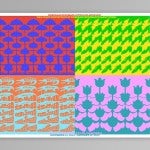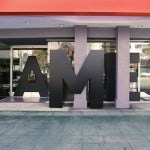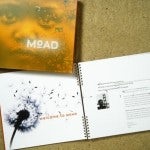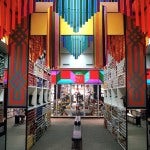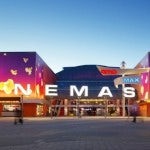Deborah Sussman was not one to fade into the background; she brought vivid color to her life and work. A fearless proponent of going against the norm and one of the first female graphic designers to rise to the top of her field, she didn’t allow her design to be overshadowed by it’s context. In what was termed environmental graphic design, she took graphics, color and typography, and applied them to architecture and public spaces, making them the center of attention.
Last week Sussman passed away at age 83 after a long battle with cancer, which has prompted an outpouring of grief and reflection back on her work and career. It’s well worth learning from, so here’s a little bit about her contribution to the design community.
Early years and the Eames Era
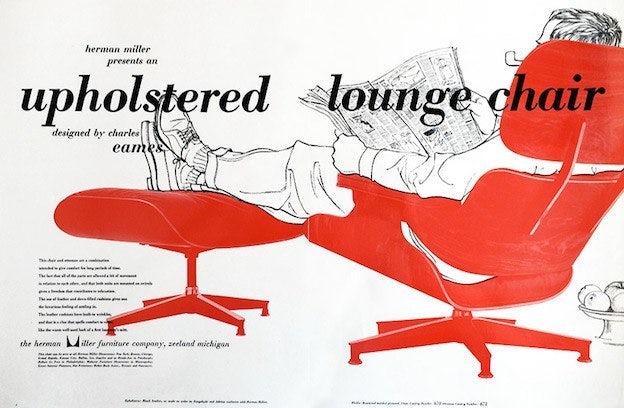
Advertisement for the Eames Chair for Herman Miller, illustrated by Sussman (via DesignBoom)
Sussman was never a stranger to prestige. After attending Bard College for painting and acting, followed by the Institute of Design in Chicago under Bauhaus professor László Moholy-Nagy, she was offered a position in the office of Ray and Charles Eames.
In 1953 at the age of 22, she started as an intern and spent ten years in the office, eventually becoming the art director for the entire company, before pursuing a Fullbright Grant to study design abroad. During this time she worked on everything from print to film to showroom design.
Supergraphics
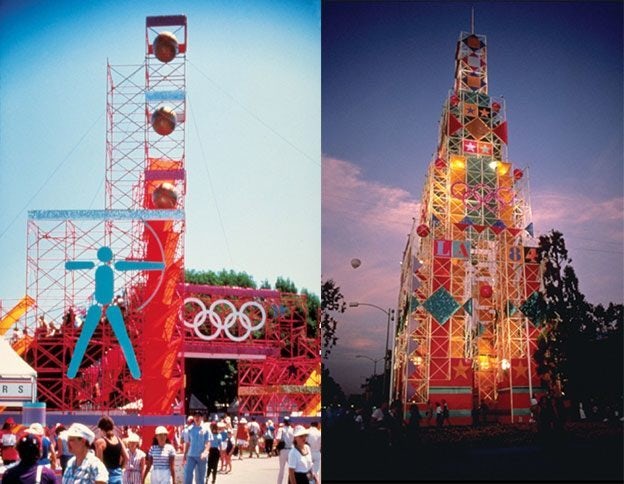
1984 Los Angeles Olympics (via SussmanPrejza.com)
In 1968 Sussman opened her own office, joined in 1980 by architect Paul Prejza — who had also just become her husband. The company’s most famous project came in 1984 when they paired with Jerde partnerships to create the “look” for the Olympic Games, held in Los Angeles. The project brought Sussman’s trademark bold “Supergraphics” to the world at large:
“The idea of Supergraphics was not that it was just big, but that it was bigger than the architecture, that it didn’t have to fit into prescribed spaces in a traditional way. That it could have its own life and go beyond the ceiling, be cropped, be as though it had almost flown over the architecture.”
The firm’s work in the Olympics put them on the design map, helping them to collect a series of high-profile clients, including Disney, Hasbro, and even The City of Santa Monica.
Amassing prestige

With Frank Gehry, Joseph Magnin Stores (via Graphic Ambient)
As previously mentioned, Sussman’s specialty was bringing out the graphics in an environment at large, which could mean anything from a museum identity or exhibit design, to wayfinding systems for parks both city and theme, to interiors and commercial spaces. She paired with some of the most famous architects of the day, figures like Frank Gehry, SOM, and Philip Johnson among others. But just because she collaborated, didn’t mean that she let her vision and style be overruled.
‘Several people have told me over the years ‘just give them what they want’ with regards to clients, and I can’t bring myself to do it. I have to inspire them and that can sometimes be a very dangerous attitude to have because you can loose yourself a lot of money!’
She was able to accomplish so much because she had a vision of what she wanted to do, and was able to bring that unique style to each project she took on.
Californian Legacy
She had projects all over the United States, but in the end her particular vision helped define the aesthetics of California, particularly of Los Angeles. A Kickstarter Project to create an exhibition of her work, entitled Deborah Sussman Loves Los Angeles! was successfully funded, and the work exhibited last year.
